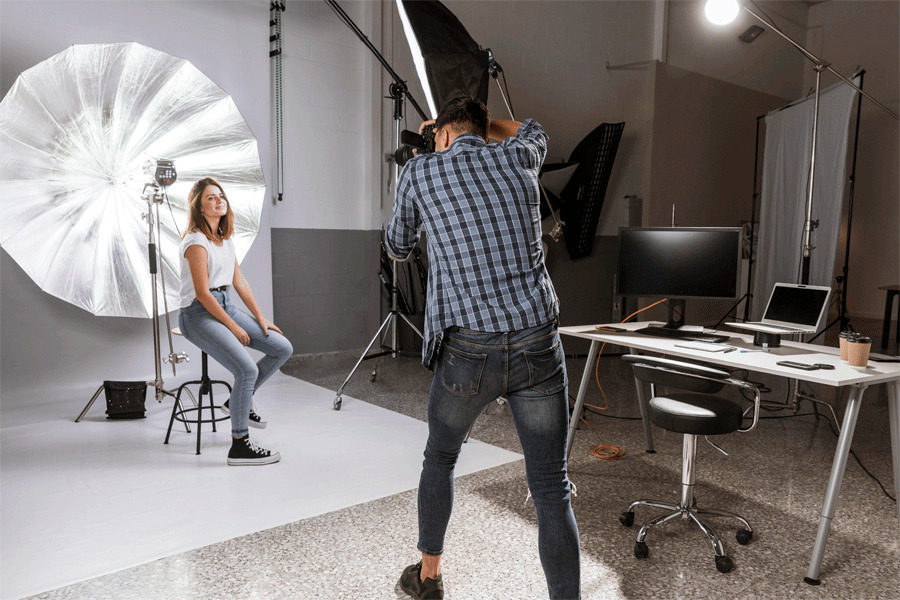A Model Release Form is defined as a legal contract used by an artist such as a photographer or production company to acquire permission to use a creative piece of work such as an image, performance, voice, name, etc., of the model, owner, or customer.
The use limits – usually for promotional or commercial display purposes – are declared in the release form, among other applicable terms. Creative material such as photographers, videos, paintings, etc., with human subjects must be handled with care due to their sensitive nature. No one wants a picture with their face being used to make money, inappropriately, or in any other way without their consent. As an artist/creative, a model release form is thus important in the creative industry in order to get authority and legal rights from the model or client before using their creative content.
Most professionals in the creative industry use this form from photographers, videographers, model agencies, and production companies. However, such forms are common in the photography industry.
The release form is a way for creatives or artists to protect themselves from civil liability lawsuits claiming they are using creative material without authorization. This form is not legally required, but it is considered good practice to use one for formal and commercial photography. The document should be signed before the shooting, whether the model has been paid or not.
Now that it is clear what the release form is, this article will discuss its importance, the different types, how to use it, and the essential components of the document.
Free Editable Forms
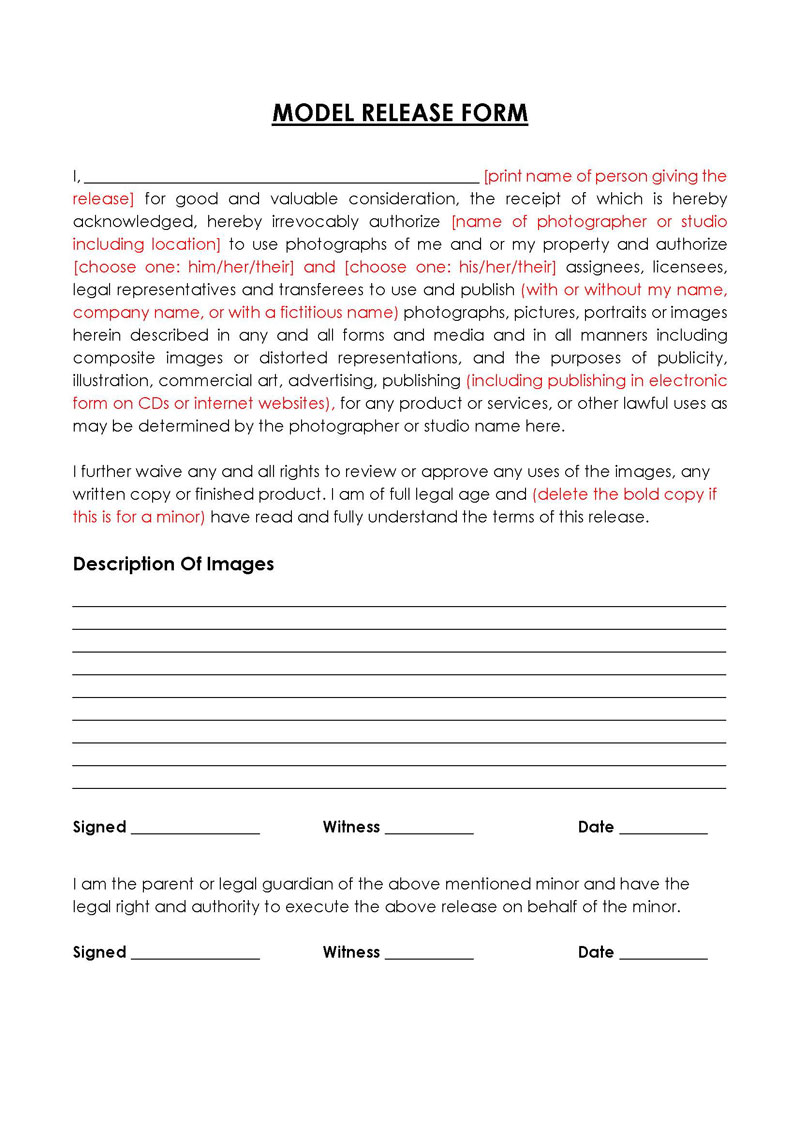


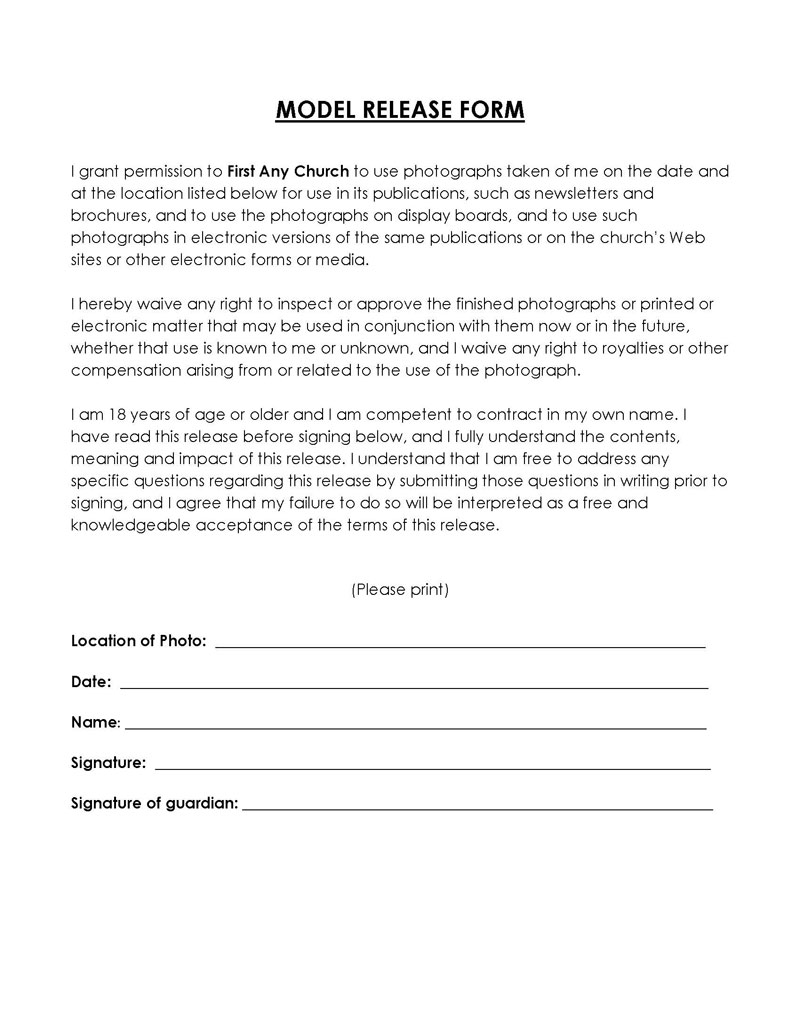



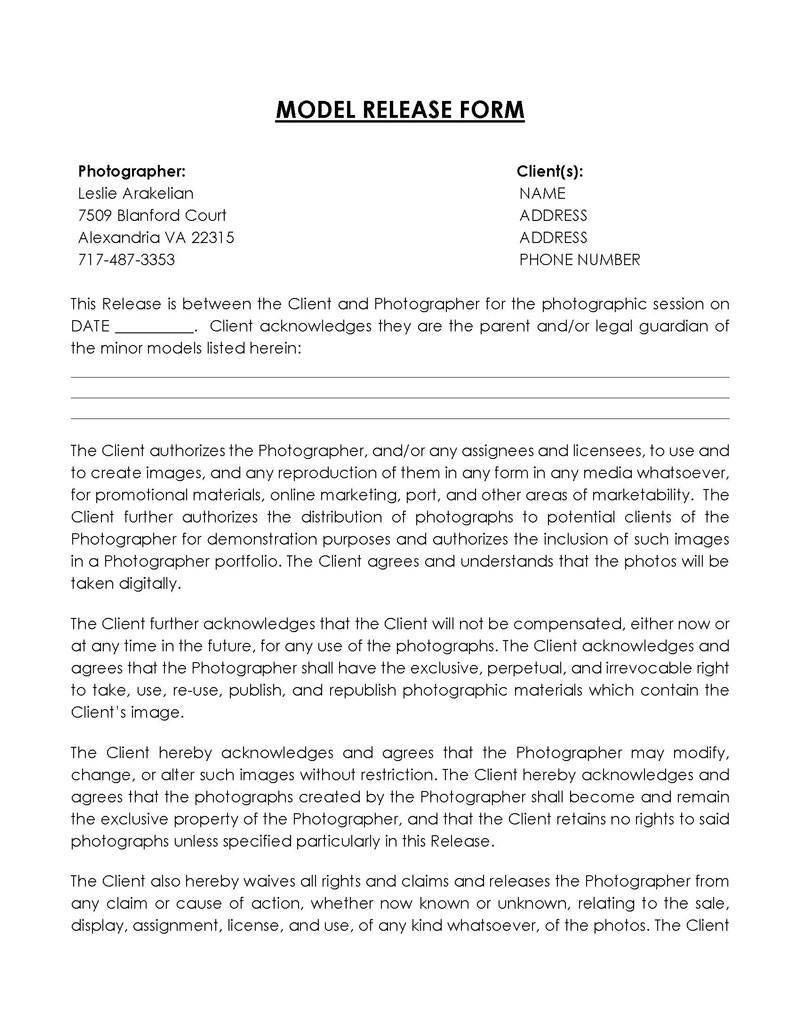


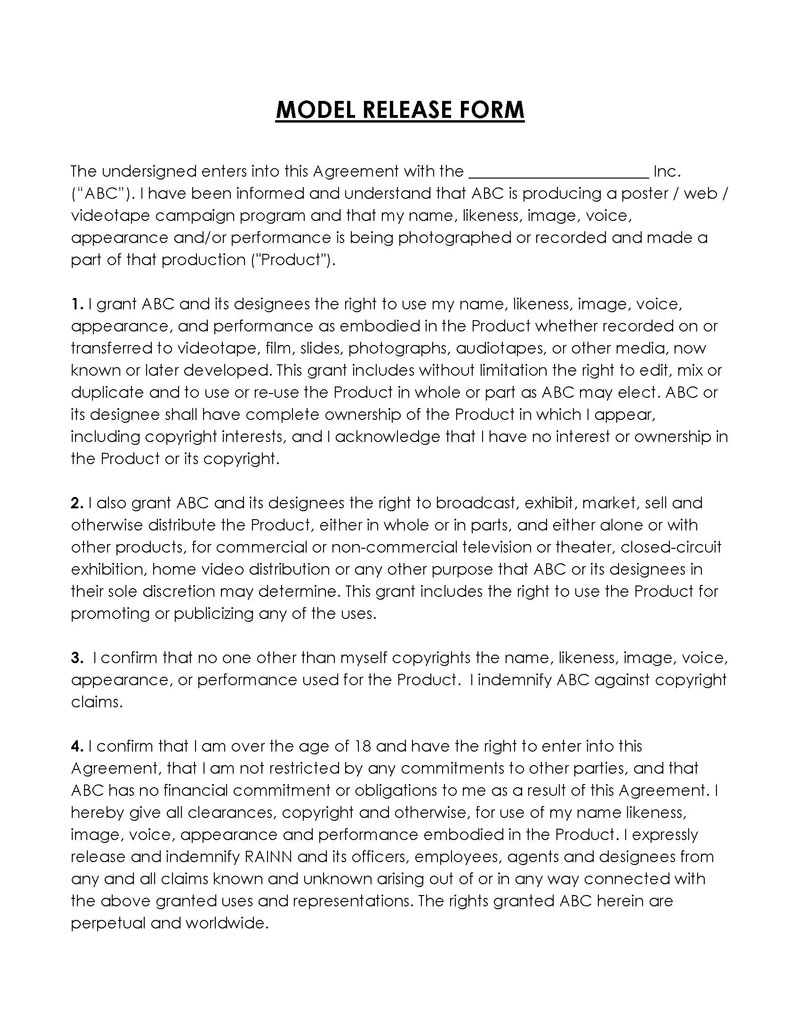



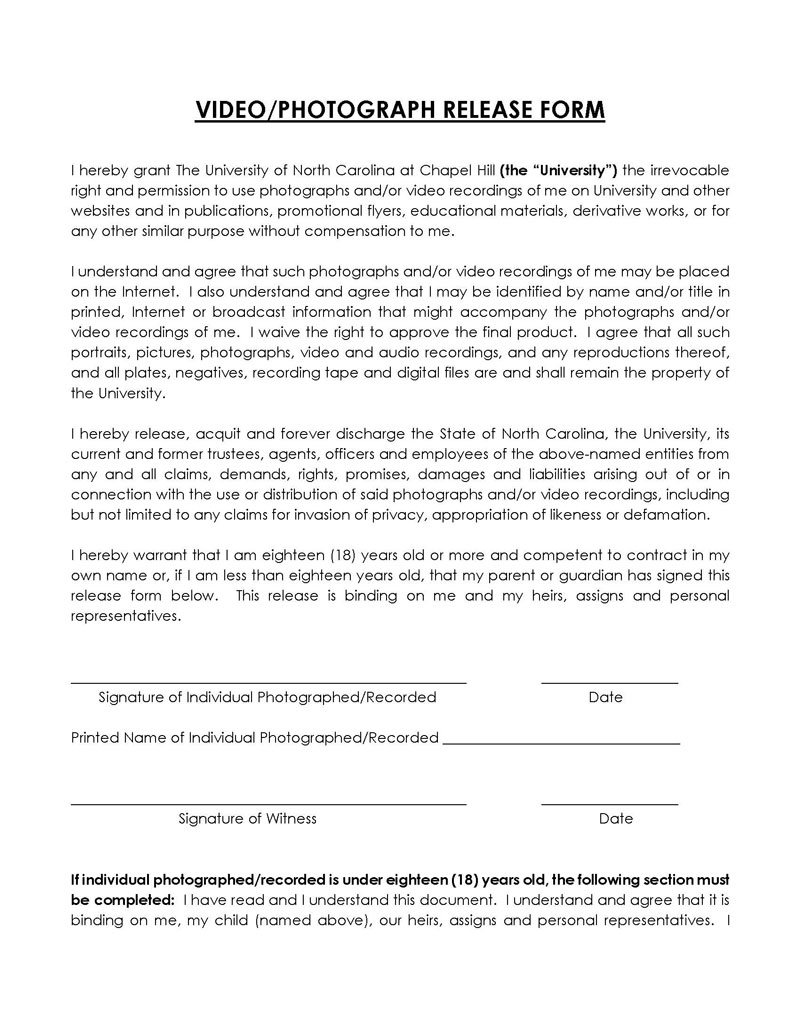
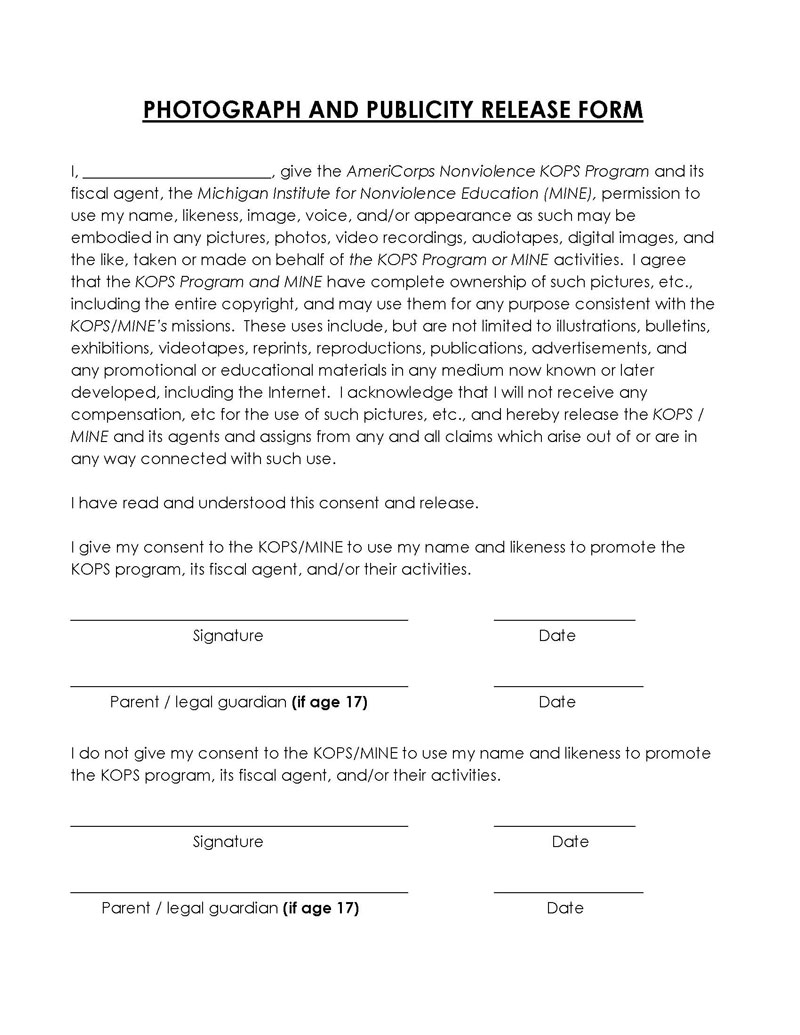

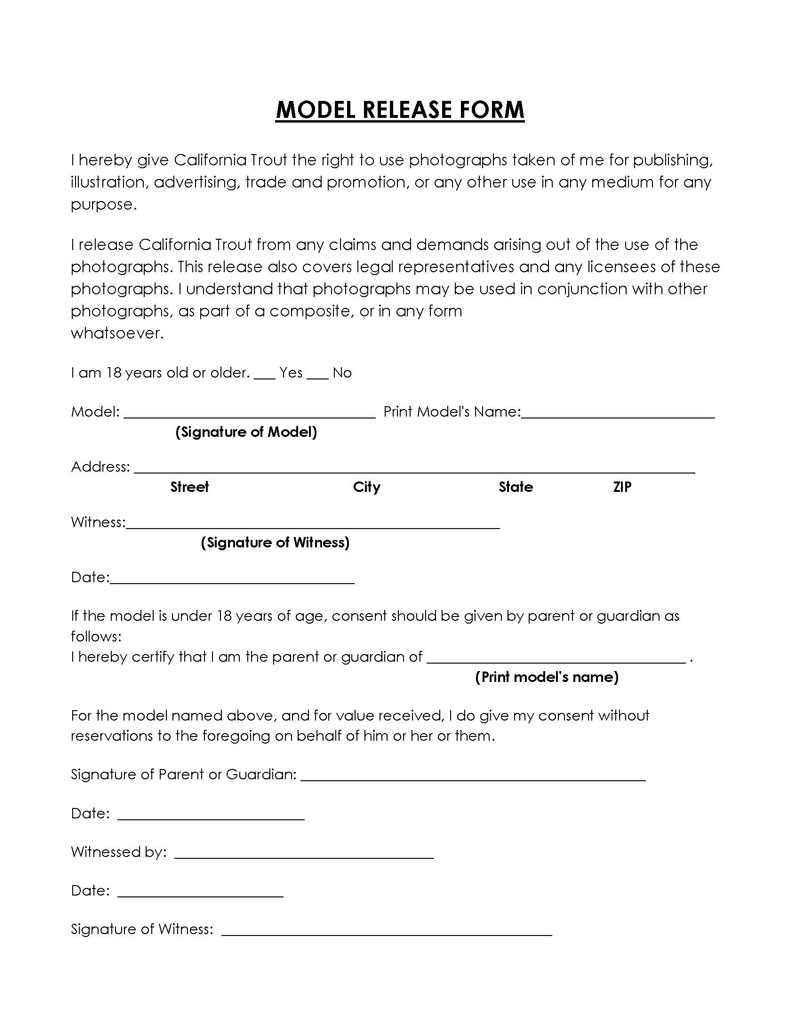
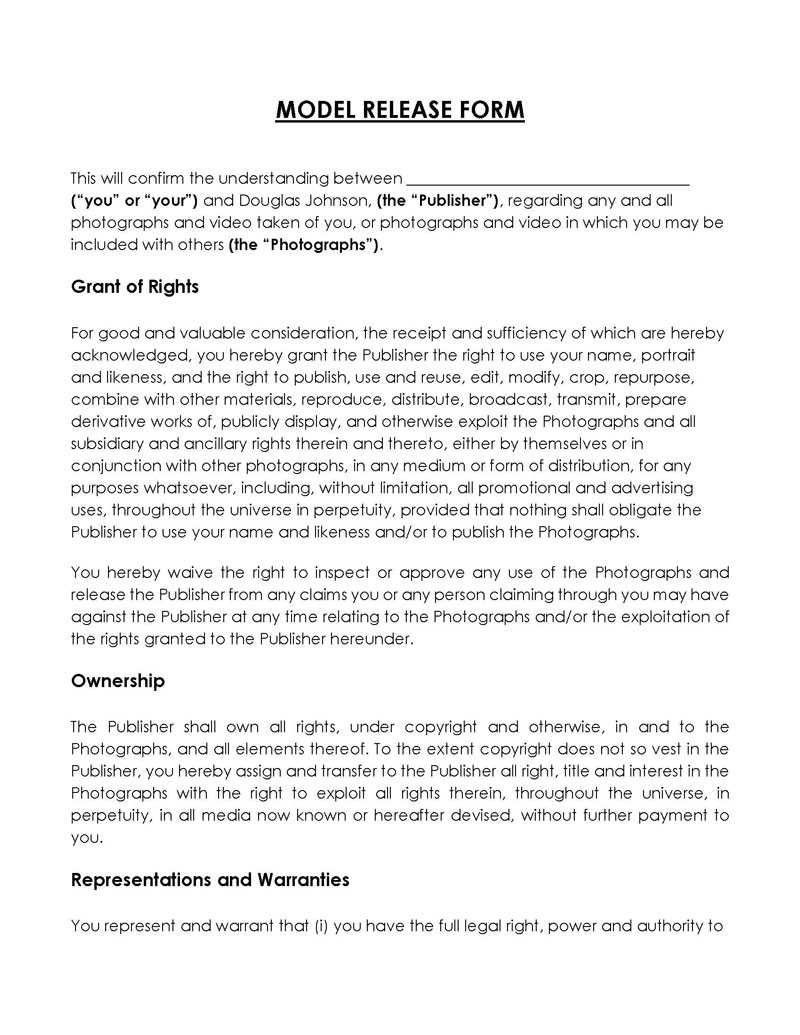
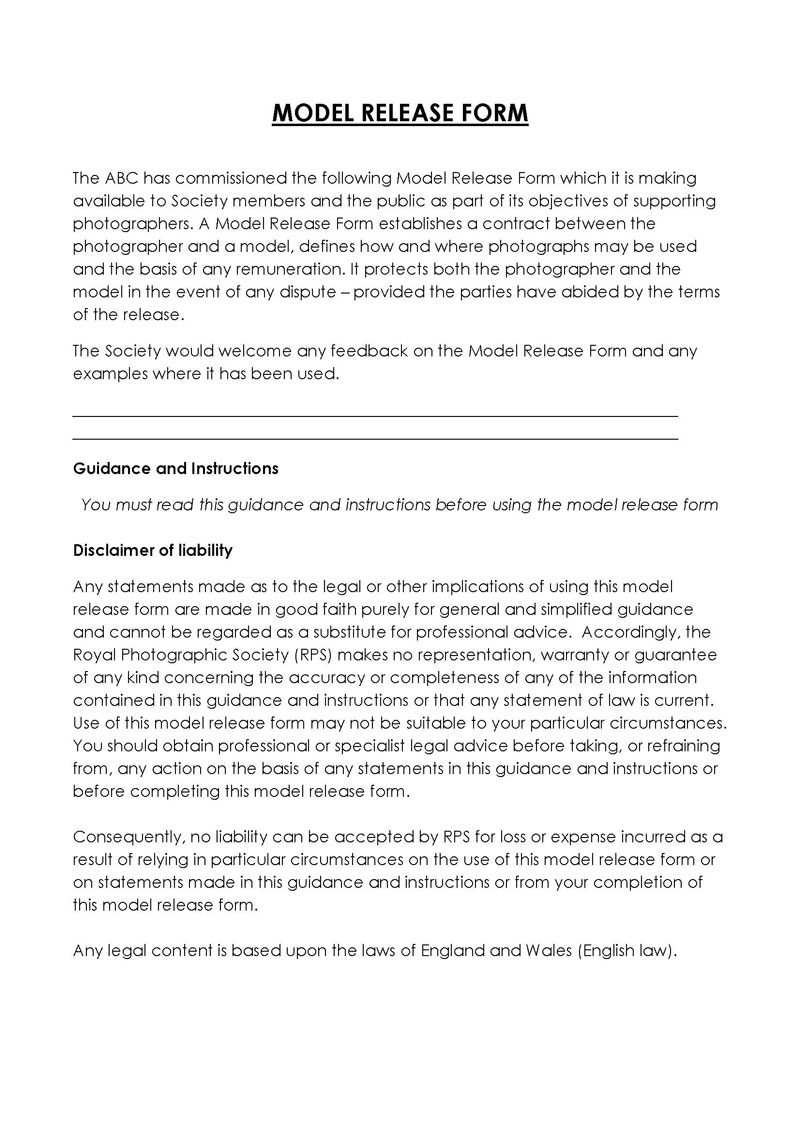


Why Should You Use a Model Release Form?
The primary reason artists use such release forms is to attain and retain the rights to use creative content. The document defines which rights the artist will release and the extent of use of the content. Typical rights an artist acquires through the release form include the right to publish, distribute, republish, edit or change the photo or video.
Additionally, the release form limits the use of content to commercial and fair use. Commercial use includes using the image/video in an ad, business website, package, etc. Fair use involves using the picture for educational purposes, publishing it in a newspaper, or for editorial purposes such as using the image in a trade magazine.
The rights and uses vary from one case to another, and it is usually for the parties to define what each aspect constitutes.
The document is used to respect the identifiable model(s) right to privacy and publicity as they release their claims on the content. The release form should permit the model to include any restrictions regarding the use of the content. Ordinarily, the artist may be sued if the content is used in a defamatory, harmful, exploitative, scandalous, or false portrayal manner.
Now, who can be defined as a model in a release form? A model is anyone who appears in the content and whose personal information and likeness can be used to identify them from the content (picture, video, audio, etc.)
What is defined as personal information or likeness or appearance is debatable. However, the common aspects include face, name, voice, uniforms, tattoos, silhouettes, or location such as home or any other distinguishing features.
Different professionals in the creative industry use the form in different ways. For example, photographers will often use the document to acquire rights to edit, publish and sell the final pictures. In film/video production, the form is referred to as a talent release form.
The form is used to acquire all legal rights to use the content in the film for commercial and fair use. For content taken in public places, all identifiable individuals can sign the release form in the image or video. However, it is advisable not to take pictures or videos of personal functions such as burials or weddings without prior authorization, even if they are happening in a public space, as they have an implied right to privacy.
State laws regulate the creation and use of release forms. It is best to consult applicable laws before using the contract.
But, How does It Works?
Using a model release form is a straightforward process. However, to ensure that the document is well written, it is important to follow a procedure that results in an all-rounded contract that protects both parties.
Therefore, a photographer who wants to use this form before a photo shoot can adopt the following steps:
Step 1: Inform the model of the release
The first step is to inform the model of the release form so that they can accept the photoshoot while being aware of the photographer’s intentions. If the model agrees to its use, the photographer should review the terms such as payment, intended uses, and other conditions they want to input into the contract.
Step 2: Check applicable state laws
Secondly, the photographer should review the applicable laws in their jurisdiction. States will have distinct provisions regarding privacy and publicity laws. Federal laws such as 18 U.S.C. Section 2252 should be reviewed in the case of minors (models under 18 years).
Step 3: Create and fill out the form
Thirdly, the form should be created to capture all the relevant details that transfer the model(s) ‘s claims to the photographs. A model release form template can be used to speed up the process and ensure no pertinent details are missed. It is advisable to make the contract airtight by stating that the photographs can be used anytime, anywhere, and for any purpose.
Step 4: Get it printed and signed
Once all the necessary terms and conditions have been input into the release form, the artist should print them and present them to the model(s). The model(s) should be given enough time to review the document as they are allowed to accept or reject the contract. It is fairly common for models to be hesitant to sign.
Therefore, the photographer should aim to expound where the model(s) do not understand. Once they agree to the terms, the document should be signed before the photoshoot begins. If the model is a minor, their parent or guardian should sign the release form. The involved parties should each have a copy of the contract.
Step 5: Prepare for the modelling shoot
Lastly, preparations for the photo shoot can commence once the contract is signed. Each party is expected to abide by and respect the stipulations of the form going forward.
Basic Contents of a Model Release Form
The contents of a form will vary from one application, state, and profession to another. This means the artist and model can incorporate clauses that meet their specific needs in the release form. However, it is imperative to ensure that all the relevant details are captured to ensure it is legally airtight.
These include:
Details of the parties
The parties bound by the release form ought to be identified in the document. Therefore, details such as names, addresses, and contact info of the photographer and model should be provided.
Description of specified photographs
A description should be included in the form stating the type of creative content involved in the process. Information such as location, features displayed, date, etc., can be provided to describe the content.
Longevity of the validity of the form
The validity of a model release form can be limited to a certain period. If this is the case, the document should indicate the longevity of its validity. Note that it is in the artist’s best interest to have unlimited validity.
The location and date of the photoshoot
Details about the photoshoot should also be provided. The contract should thus show the location, e.g., Studio X, and the specific date. This information can also be used to identify the pictures and protect the artist from claims that the pictures were taken elsewhere without the model’s knowledge.
Declaration of how and when the photo may be published
The release form should declare how and when the artist intends to use the specific content. Specific details should be provided in this section. Ambiguous intentions may be seen as an attempt to deceive or defraud the model.
Applicable conditions of participation and usage restrictions
Any conditions regarding the model’s participation should be clearly spelled out in the release form. It is vital to communicate these conditions before the model agrees to the photo shoot. The usage restrictions should also be declared in this section.
Advisement of photo ownership and any third-party publishers
A statement declaring that ownership of the content will be transferred to the artist and third-party publishers are not authorised to use the content without authorization should be included. This section can also state ways in which third-party publishers are allowed to use the photos or videos.
Breach of contract implication
A declaration of applicable implications should the terms of the model release form be violated should be supplied. For example, the statement can declare that “all available legal options will be explored” as the contract can be breached in many unprecedented ways.
In addition, the contract can indicate specific uses or conditions under which the release form can be revoked.
Payment clause
A payment clause should also be included detailing how much the model will be paid for their appearance in the content. The clause should indicate the amount and method of payment. In some cases, the artist may be required to pay a significant amount in exchange for the full legal rights to the content.
The number of prints or digital copies to be sent
The document must also state the number of copies of the photo or video the model or client will be supplied with. It should be specified whether the copies will be print or digital.
Picture identification, if applicable
The picture identification information can also be supplied in the release form. This is often the case with artistic nude photography.
Signatures
The document should be signed at the bottom to make it authentic and legally binding. The document should be signed by the model, parent/guardian for minor models, and a witness.
Types of Model Release Forms
These forms vary based on their utility. Consequently, there are different types of release forms available for artists. To ensure the release form serves its intended purposes, it is crucial to use the proper type of model release template.
These types of releases differ in the following ways:
Photography model release form

When a release form is used to secure the legal rights of a specific model’s image(s), a photography model release form is used. Some rights relinquished through the document include the right to produce, edit and print the image(s). Stock photography sites use such release forms to buy images from models.
Appearance or talent release form
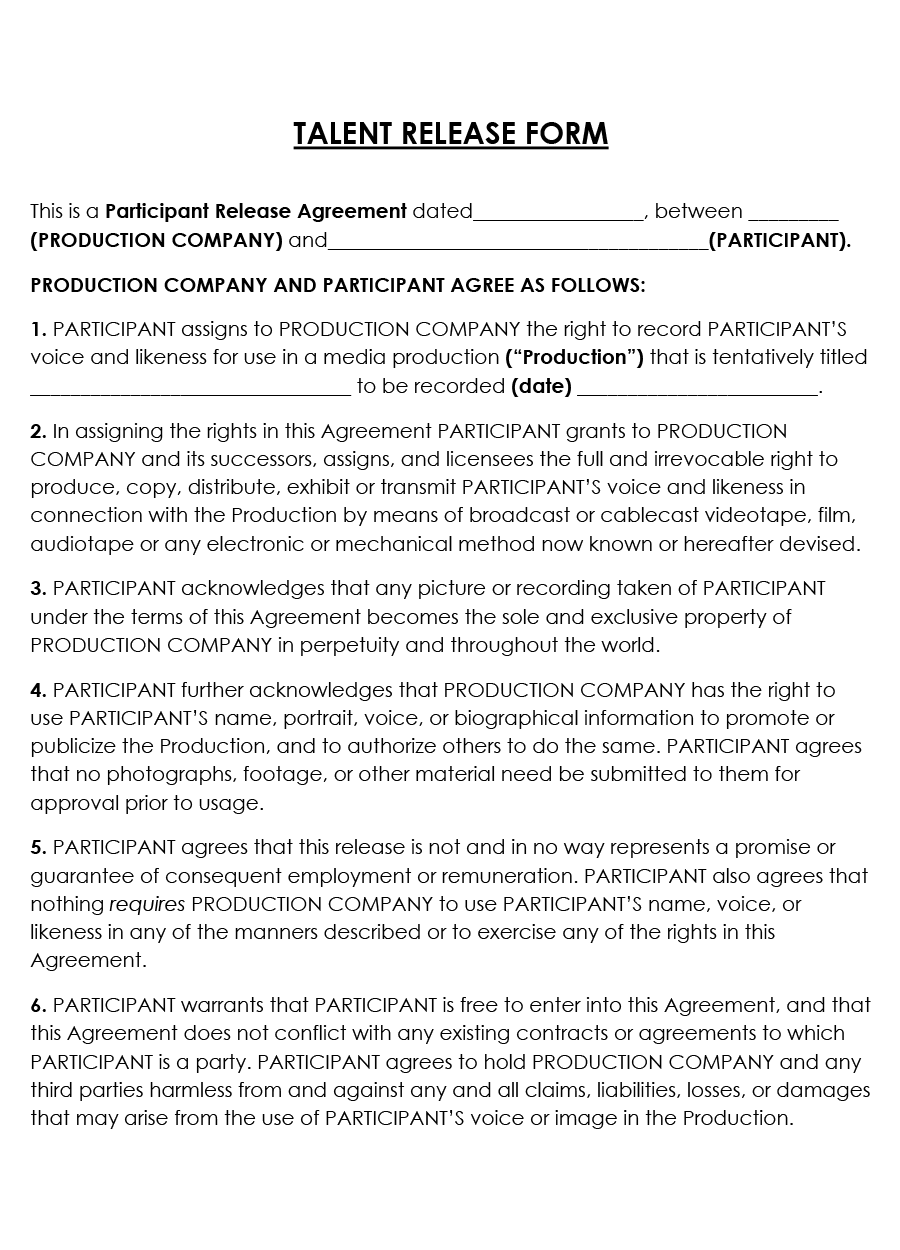
Filmmakers and videographers use an appearance/talent release form to obtain the right to use the cast’s content. The form will usually be more detailed in order to cover the various ways a video can be used. However, it does not have to outline that promotional rights are being relinquished by the model, as pictures used in the poster and billboards are considered part of the deal.
Crowd release form
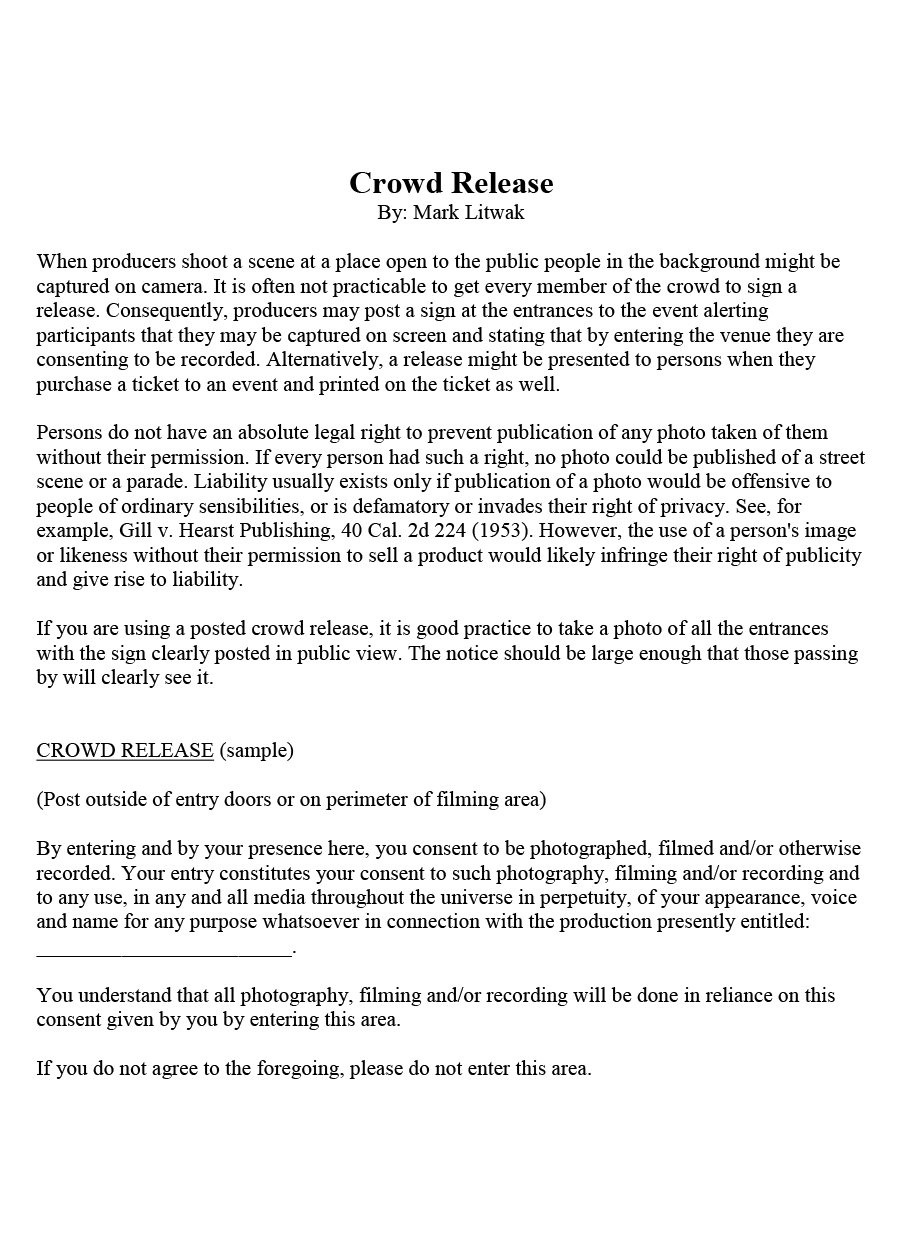
This type of release form is used when seeking legal rights to content taken in public spaces. Unlike photography and videography types of forms, a crowd release does not require signatures from all the individuals in the content. This is because individuals in public spaces are not legally entitled to “reasonable expectation of privacy” because by being in public, individuals are deemed to make themselves seen willingly.
Therefore, the crowd release form is posted within the area where the photoshoot or filming is taking place or included in the receipt after event-goers purchase a ticket to the event.
The release form should state that the subject consent to having their picture and video taken for promotional purposes by entering the area. Note that identifiable subjects may be legally permitted to sue if the content is used for commercial or exploitative purposes.
Public figure release form

Public figures like celebrities and politicians are also entitled to privacy, and as a result, their images cannot be distributed for commercial purposes such as advertisements without their consent. However, being public figures, the laws governing public figures’ photos or videos taken in public are often subject to interpretation.
For example, news articles, blogs/vlogs, and educational publications are allowed to use public figures’ images or videos without a release form as, in such cases, it is considered editorial usage, which is purely informational and not a business.
However, the same images or videos cannot be sold to another entity for an ad or money. However, most states do have clear restrictions on how the images and videos are taken, even though the rules of publication are debatable.
Minor release form
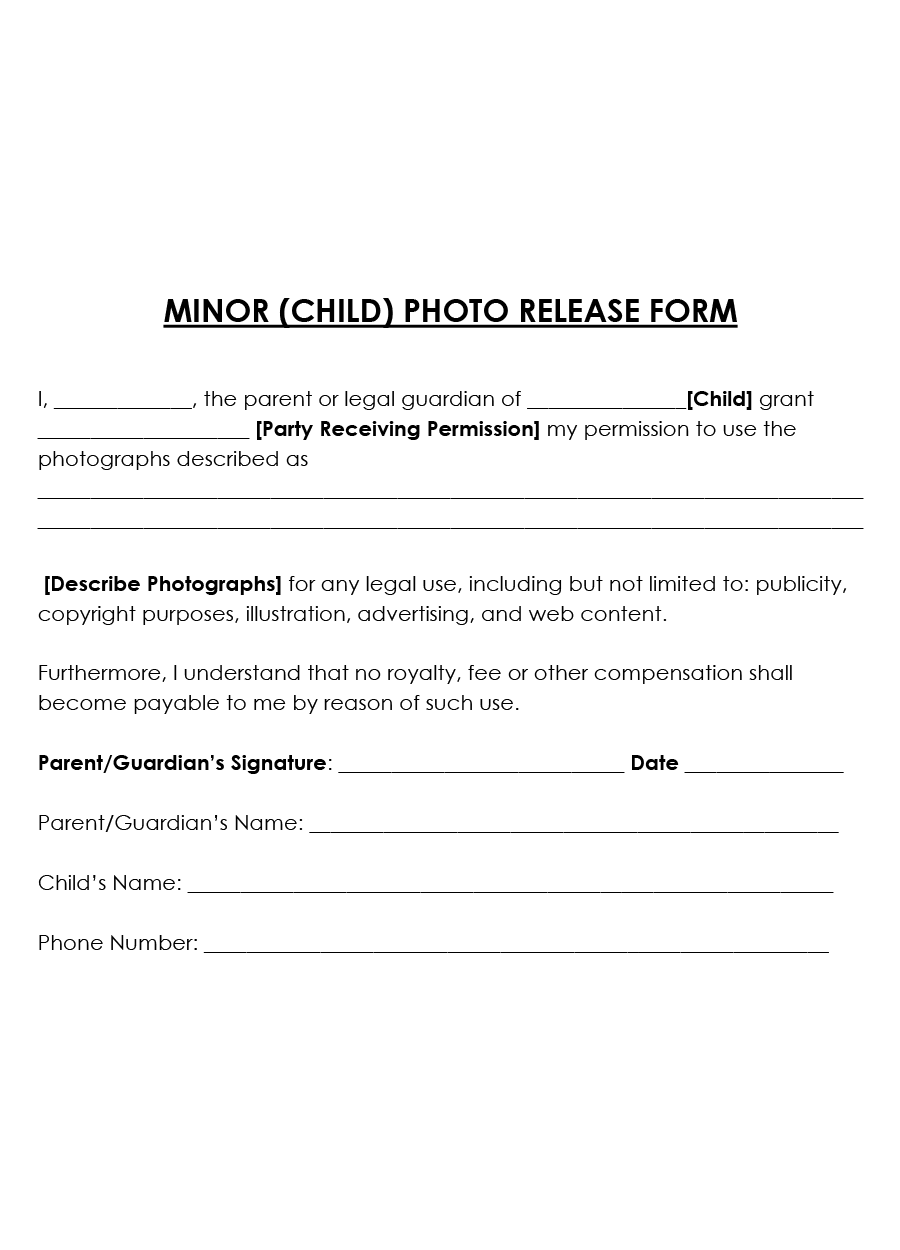
A minor release form is a contract used to get permission to cast a model under 18 in a film or photoshoot. The release form can be signed by one or two parents/guardians
Animal release form
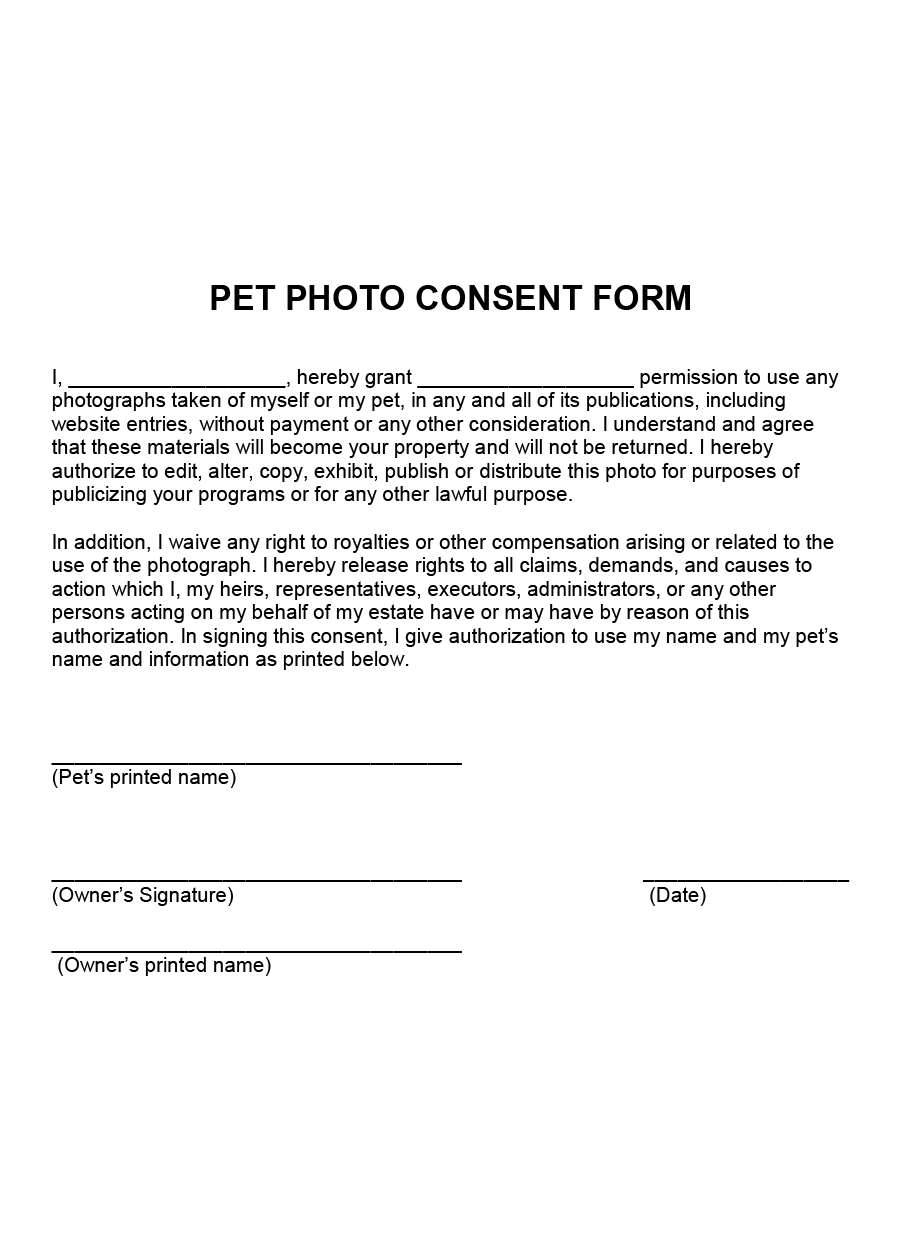
Pets and domestic animals can often be part of a photoshoot or film. In such a case, the animal owner should sign an animal release form to guarantee that they won’t sue the artist for using images or videos with their animals later on. Such release forms are necessary for photographers and videographers working with animal trainers, animal commercials, or shelters.
Photography Release Form Vs. Photography Model Release Form
It is easy to confuse a photography release form and a photography release form for a model. As extensively discussed in this article, a photography model release form is signed by the model to grant the artist the legal rights to use the images and videos as directed by the form.
A photography release form is an entirely different document. It is signed by the artist to grant the client or model the right to use or duplicate their images or videos. Photography release forms are often mandatory for private and personal pictures and videos such as wedding photos, family photos, corporate headshots, etc.
Best Practices to Follow
To ensure the model release form wholly protects the artist and allows them to use the images or videos as they prefer, there are several tips they can consider when using the forms.
These include:
Prepare for each new shoot
Each new shoot should have its own release form. This should be the case even if the shoot involves the same model(s). Each shoot should have its independent paperwork to capture other shoots’ creativity dynamics.
Ensure accuracy and readability
Since the release form is a legal document/contract, its contents must be accurate and legible. The form should capture the right names, contact details, and descriptions to point to the specific model and content in question. In addition, a legible font and font size should be used to make sure the document is easy to read.
Make it clear and short
The release form should be clear to ensure the client/model understands what is being spelled out or implied. Note that a model cannot sign away rights that were not explicitly declared in the form; therefore, to ensure each clause of the form is legally enforceable, details must be clearly spelled out. The document should also be short and precise.
Create an electronic record
An artist should ensure they have an electronic record of the form after the model signs. This can be achieved by scanning the release form to have a digital copy that can be forwarded to the model via email.
Store your forms
The digital copies of the release form can be stored in the cloud to ensure they are accessible whenever needed. It is advisable to use one platform to store the release forms to simplify referencing. The physical copies should also be safely stored in a safe place like a file cabinet.
Final Thoughts
Any creative who intends to create content with identifiable human subjects should consider using a form, more so if they intend to profit from it. A model release form is essentially a document that conveys a model’s title/ownership or interest in an image or video to the artist. Since it is highly debatable what qualifies as “identifiable,” local laws should be consulted in this regard. Also, it is advisable to have an attorney review this release form to ensure it uses the proper legalese and meets the essential legal requirements.







